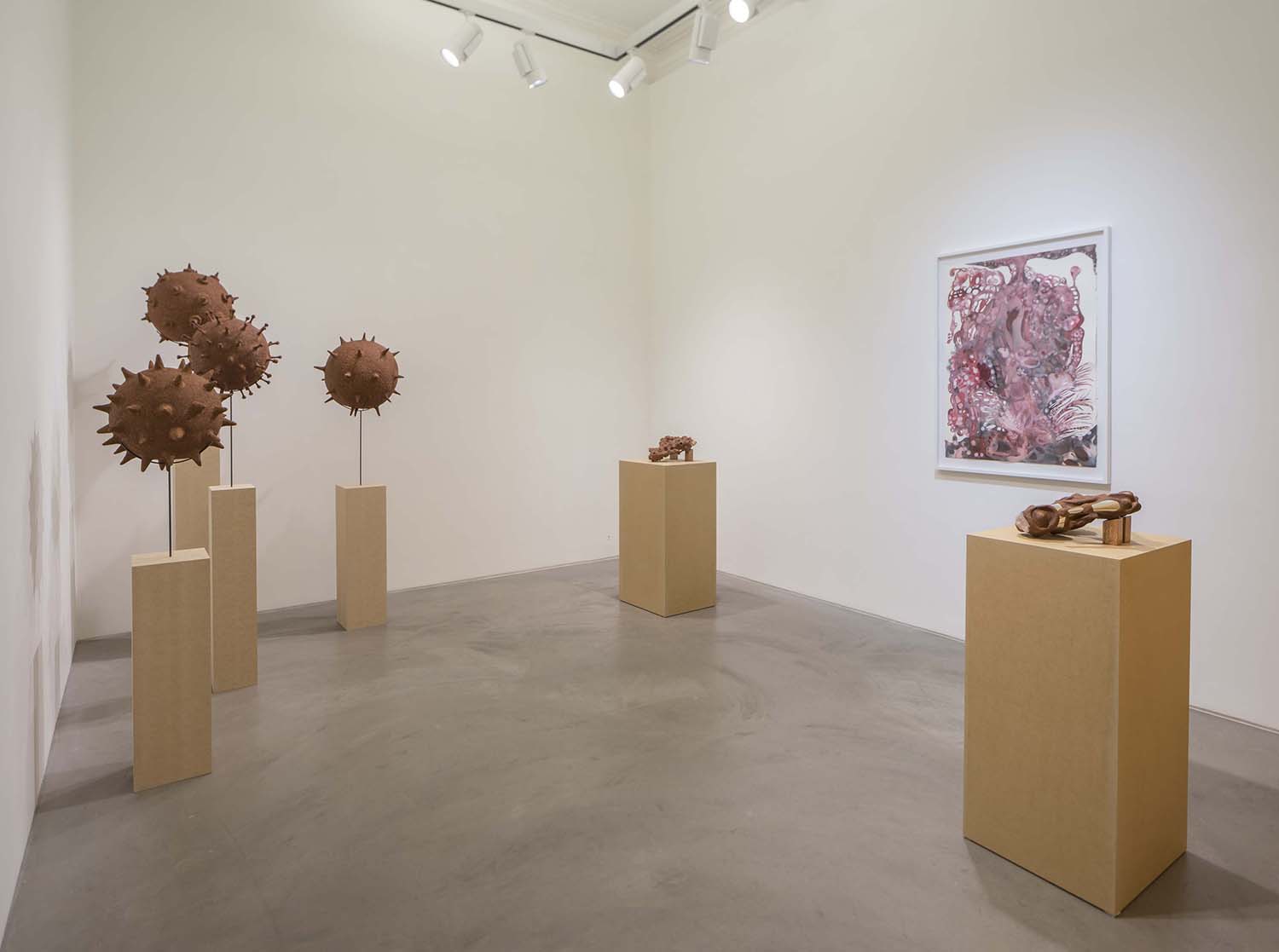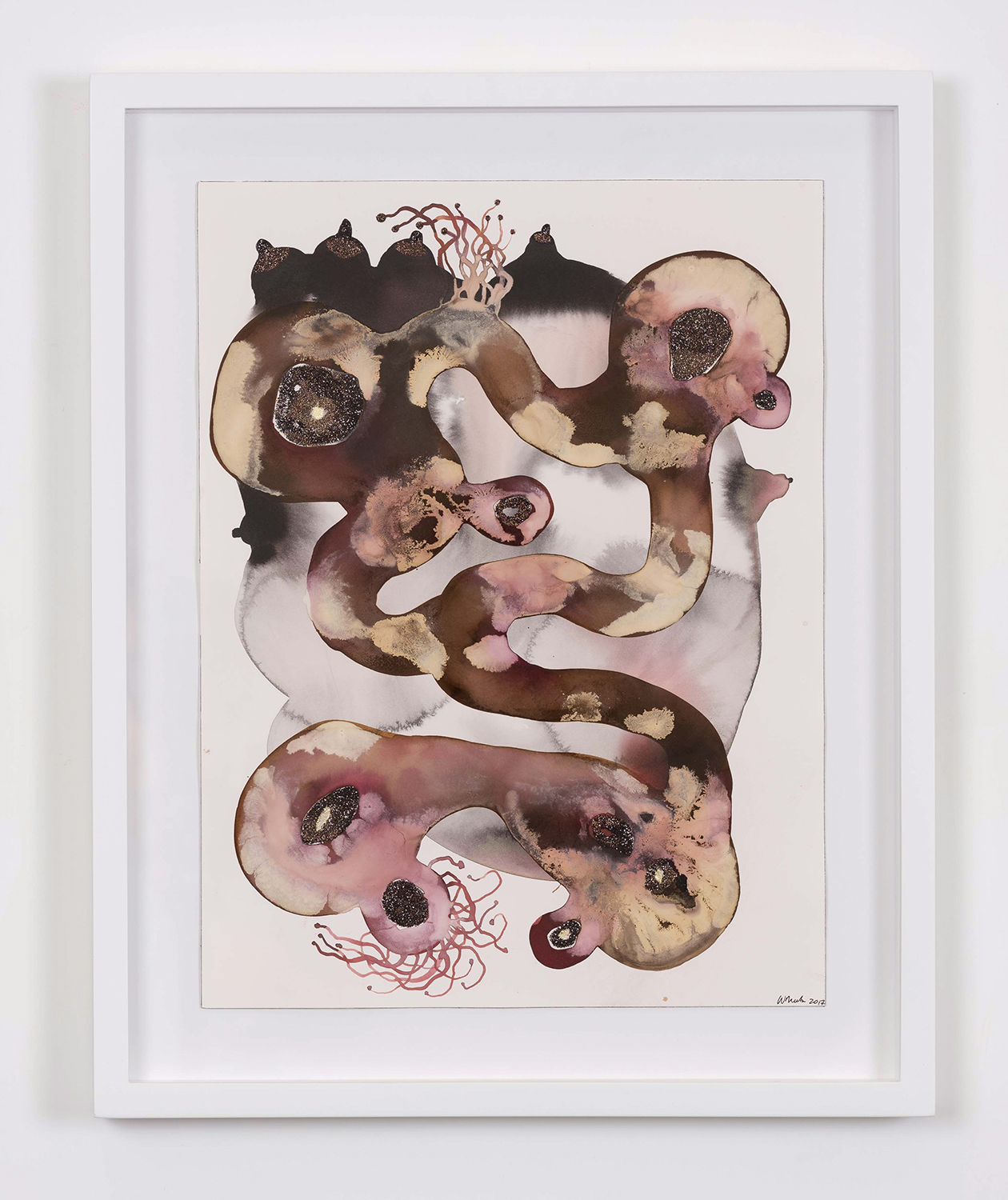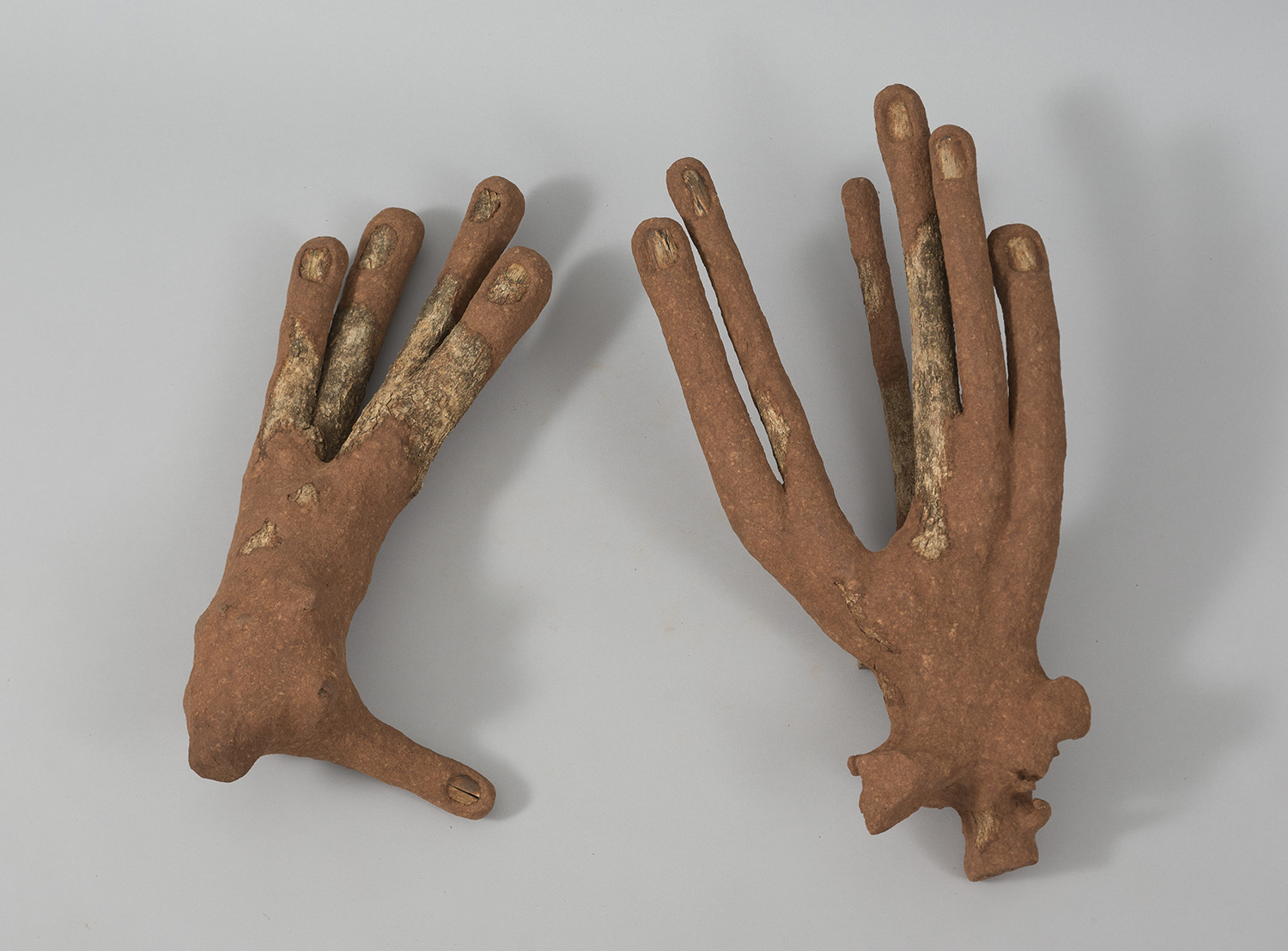Shows
Wangechi Mutu at Lehmann Maupin in Hong Kong


Born in Kenya and currently working between New York and Nairobi, Wangechi Mutu inhabits a cross-cultural realm in which her hybrid-aesthetics and materiality take on a compelling juxtaposition between science and myth. In Lehmann Maupin’s first exhibition with Mutu in Hong Kong, the artist’s exploration of biological mutation and matter is presented through a cohesive installation, presenting new sculptural works alongside paintings that demonstrate her intricate aesthetic.
As was the case with much of her previous work, Mutu’s current practice continues to recontextualize the relationship between the human body and the environment. However, within these latest pieces, the artist’s recurrent discussions of politics and gender take on reduced roles. This shift toward a subtler political presentation lends a stronger tone to Mutu’s work, in that she has honed both her political and conceptual messaging. The key aspect of this discussion in the exhibition lay predominantly in Mutu’s interest in biological mutation. Her two series of paintings, “Growth” (2016) and “Insides” (2017), convey free-form yet systematic patterns that connote bacterial spread within a petri dish or wild plant matter. Painted in predominantly earthy brown tones, but with pink and purple pigments seeping forth, Mutu’s style balances the natural movement of watercolor with controlled and precise brushstrokes. The images act as frozen frames of mutation and growth, with an aesthetic resembling ornate diagrams that would not be out of place in a journal of botanical science.


Within Mutu’s sculptural pieces, two key strains come to the fore—human evolution and pathogenesis, both of which are utilized to develop Mutu’s interest in the impact of mutation upon our species. With their iron-rich soil and wooden material that connote primitive materiality, Mutu’s sculptures God Hands (2017), Fertility Heal I/II (2017) and Mirror (2016) weave an intricate metaphorical space between the legendary and scientific accounts of human evolution. The rustic anthropomorphic sculptures—consisting of a pair of hands, a pelvic bone and a portrait bust—are roughly molded into objects that appear to have grown from the earth itself. Through this they become analogous of an allegorical narrative while also presenting the Darwinian morphing of human genetics borne from natural growth and mutation. Furthermore, the sculptures’ formal fluidity is reflective of the progressive genetic development of all organisms, including human beings.

Mutu also cogitates on destructive biological phenomena to explore the continued contention between humans and nature. Her series of seven sculptures, representing a range of diseases—including measles, meningitis, chicken pox and others—encapsulates both the violence and perennial development of nature’s destructive forces. Intended as large-scale representations of bacterial cells and organisms, and created mainly from the same soil as her anthropomorphic works, the pieces incite a direct reflection on the dual biological ancestry of extermination and generation—with all forms of organic matter stemming from differing arrangements of the same atoms.
Ultimately, Mutu’s motivation lies in articulating a sense of hope within a cycle of destruction. While presenting the viewer with emblems of human extirpation, she has also chosen specific viruses and bacteria that have been mitigated by human society’s scientific ingenuity. Thus, Mutu’s intent is to entice the viewer to consider both the fragility of our existence and the resourcefulness of our species. From a differing angle, The Sticks (2016) depicts the head and neck of a human figure in ambiguous relation to a series of branches. The figure can either be seen as growing with the plant matter, or being suffocated and consumed by it. As in the rest of Mutu’s presentation, we are led to contemplate the fragile entanglement of life and decay, evolution and extinction.
Wangechi Mutu’s solo exhibition is on view at Lehmann Maupin, Hong Kong, until July 8, 2017.









